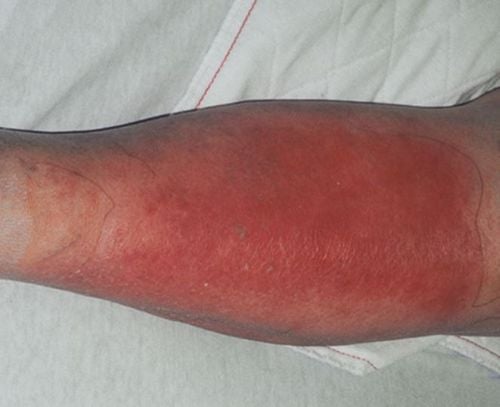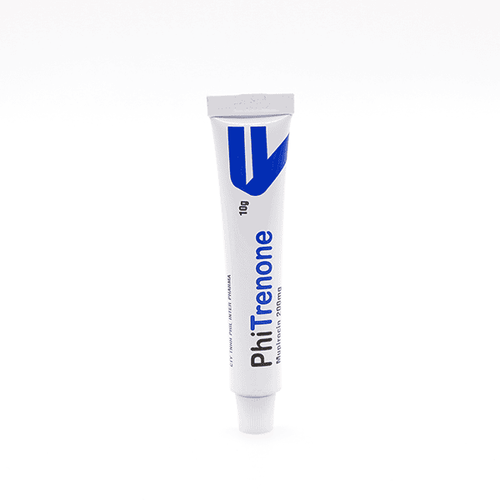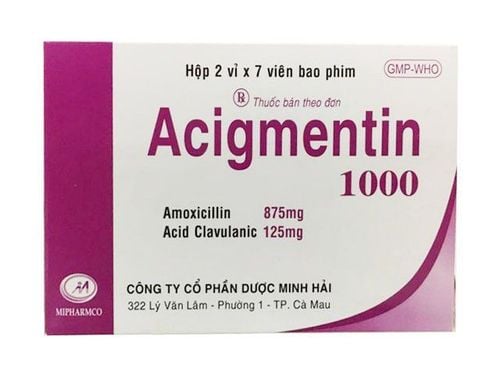This is an automatically translated article.
Cellulitis is a bacterial infection in the deep layers of the skin, often with sudden onset and life-threatening if not treated promptly. In the setting of cellulitis, the skin barrier is often damaged, causing rapid and widespread infection.
1. What is cellulitis?
Cellulitis is an acute soft tissue infection. It is usually caused by Streptococcus or Staphylococci. Mild cases of local infection may present with redness in one area of the skin. Severe cases cause fever and regional lymph nodes may become enlarged, even with sepsis.
Manifestations of cellulitis are as follows:
Soft tissue infections often cause leukocytosis, rapid pain, low blood pressure, delirium or swelling of the skin. Local redness and pain are common in the lower extremities. Swollen, hot, red skin; The lesion color resembles orange and the border is not clear (except for erysipelas). Bleeding under the skin. Blisters develop and rupture, possibly with skin necrosis in the affected area. Fever, chills, tachycardia, headache, hypotension, and delirium often precede the clinical presentation, but may not appear. presently.
2. How is cellulitis diagnosed?
The diagnosis of cellulitis is usually through clinical presentation, blood culture and, in some cases, tissue culture. Blood cultures are useful in immunocompromised patients with signs of systemic infection. In immunocompromised patients or with cellulitis at the site of injury (animal bite, penetrating wound) if there is no response to empiric treatment or a negative blood culture, tissue culture of the damaged tissue is necessary.
In addition, cellulitis is easily confused with contact dermatitis and stasis dermatitis, which leads to ineffective treatment. To limit this confusion, the differential diagnosis can be made by:
Contact dermatitis is often pruritic, is limited to lesions at the site of contact, and has no systemic symptoms. Stasis dermatitis often has inflammatory skin features such as scabs, eczematous lesions, lichenification, evidence of venous stasis, and bilateral symmetry. In most cases, cellulitis responds quickly to antibiotics, and local abscesses often require incision and drainage. Possible serious complications of cellulitis are subcutaneous infectious necrosis and bacteremia, and lymphatic obstruction.

Viêm mô tế bào rất dễ nhầm lẫn với viêm da tiếp xúc và viêm da ứ đọng.
3. Treatment of cellulitis
Principles of cellulitis treatment are as follows:
Antibiotics: The choice of antibiotic treatment depends on the presence of pus or not. When cellulitis is mostly non-purulent, choose an antibiotic with a spectrum against both Group A Streptococcus and S. aureus. Purulent cellulitis is considered high-risk, so broad-spectrum antibiotics for MRSA or prophylactic treatment should be given to patients with invasive trauma, surgical wounds, high-risk symptoms (e.g. subcutaneous blood, blisters, severe swelling of the skin, numbness, symptoms of shock or hypothermia). Most patients will recover in 2 weeks. Hospitalization is required immediately if the patient develops symptoms of high fever, vomiting, or recurrent cellulitis. Measures that can help improve cellulitis are as follows:
Elevate the affected area to reduce swelling and pain. Move the affected part of the body regularly. Do not wear compression stockings until the wound has healed. Drink a lot of water. In a nutshell, cellulitis is a bacterial infection in the deep layers of the skin that often has a sudden onset and is life-threatening if not treated promptly. In case you notice the symptoms of the disease, you should go to a reputable medical facility for examination and treatment, to avoid the risk of dangerous complications.
Please dial HOTLINE for more information or register for an appointment HERE. Download MyVinmec app to make appointments faster and to manage your bookings easily.













